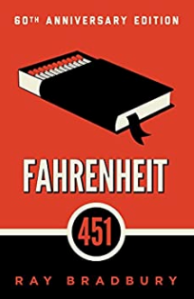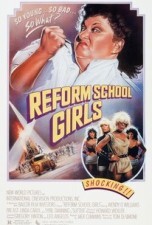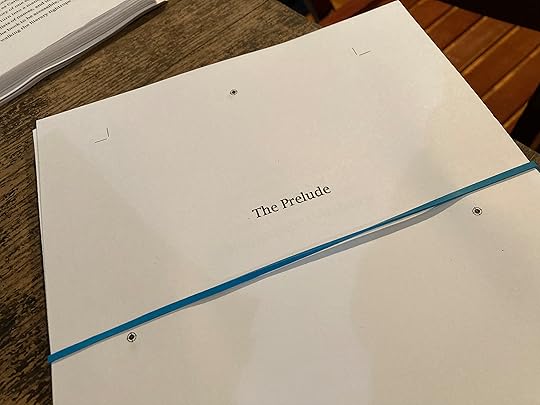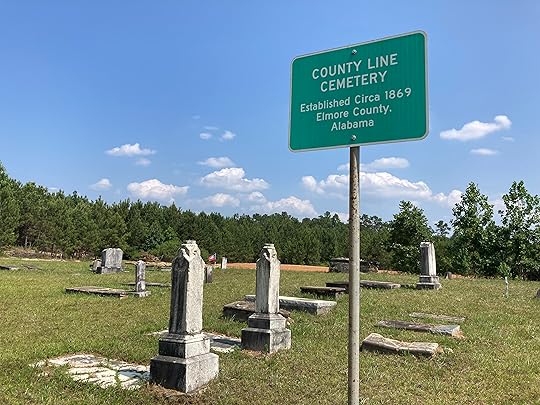Foster Dickson's Blog, page 14
July 6, 2023
A Deep Southern Throwback Thursday: The Destruction of the Georgia Guidestones, 2022
It was one year ago today that someone (or some group) destroyed the controversial Georgia Guidestones, a monolithic granite monument in Elberton, Georgia that was constructed, placed, and unveiled in 1979 and 1980. Just as the identity of the Guidestones’ creator was obscured from public knowledge, so was the identity of the monument’s destructor. The site had long been a source of controversy, some believing it to be a beacon for witchcraft, others taking exception with the content of its carved text.
News of the monument’s destruction came in this Georgia Public Broadcasting story, which explained:
The Georgia Guidestones have been a roadside oddity for more than four decades in Elberton, about two hours northeast of Atlanta. The monument stood close to 20 feet tall and has been a testament to the region’s granite industry — and a vector for conspiracies.
While most locals, passersby, and visitors would regard the Guidestones as just a “roadside oddity,” others have taken deep offense at the style of the monument, the content of the messaging, or both. With its four nineteen-foot-tall granite uprights and a large piece of granite placed roof-like on the top, the monument resembled Stonehenge and other early or prehistoric/pagan constructs, which has led some people to believe that its purpose had to do with animism, nature worship, or even satanism. Others disliked the ten “guides” that the monument offered. Chief among them was the instruction to keep the human population below five-hundred million. What has offended some people about that was: to achieve this, a majority of the world’s billions of people would have to die. Which begs the question: who gets sacrificed to achieve this vision of a sustainable future for humanity? Number two lent itself to this purpose: “Guide reproduction wisely.” Was that an endorsement of abortion or infanticide, or did it foresee something like The Handmaid’s Tale? Where guide number one gave a hard and fast number to adhere to, number two could be open to a vast number of interpretations, some kind of scary. But in its favor, it did add “improving fitness and diversity.”
The remaining eight seemed like a mixture of common sense rules, overly idealistic dreams, and ill-defined notions. Among those that might not invite argument were number five (“Protect people and nations with fair laws and just courts.”) and number seven (“Avoid petty laws and useless officials.”) A few might incite significant debate about what form they would take in real life, like number three (“Unite humanity with a living new language.”) or number eight (“Balance personal rights with social duties.”). Globally and politically speaking, number six would be a hard sell, since the United Nations kind of tries to do this: “Let all nations rule internally resolving external disputes in a world court.” Numbers four and nine deal with abstract concepts: “Rule passion — faith — tradition — and all things with tempered reason,” and “Prize truth — beauty — love — seeking harmony with the infinite.” Finally, number ten is a darn good idea, but would still get real blowback: “Be not a cancer on the Earth — Leave room for nature — Leave room for nature.”
In general, I see no good reason to destroy the Georgia Guidestones, even if someone was bothered by the ideas they expressed. It had been over forty years since they were unveiled in a public ceremony, and these somewhat apocryphal stones had not achieved notoriety nor gravity beyond being a “roadside oddity” in a small Southern town. Furthermore, I doubt that anyone on a serious quest for the secret to a good life and hope for humanity would go looking in a field in eastern Georgia. Unfortunately, though, the Guidestones had found a place among current conspiracy theories, including the fringe belief that COVID-19 was a government effort to reduce the world’s population to five-hundred million.
If you ask me, the tenets expressed and the way they are presented are not witchy or pagan, but seem vaguely Masonic and generally classical. Considering that Freemasonry in America hits its peak in the late 1950s and was prevalent throughout the ’60s, ’70s, and ’80s, a lot of Americans – including Southern men – were involved in Masonic organizations. My guess is that whoever had them created and erected was probably a relatively well-educated, well-read, wealthy white man with conservative social ideals, a solid knowledge of the Bible and classical literature, and personal experience with Freemasonry, the combination of which led him (and possibly a group of friends) to believe that they had things figured out. The Guidestones look to me like an attempt at a new Ten Commandments by a couple of old white dudes from the lodge.
Obviously, others – possibly these conspiracy theorists – must not have seen the Guidestones as being so harmless. Video surveillance footage showed a person placing the bomb at the foot of the monument, but no one was ever identified or arrested. In July 2022, a month after the destruction, the local DA was still expressing his intention to find and prosecute the offender, and the Georgia Bureau of Investigation was helping, too. But nothing ever came of it. Ultimately, the decision was made not to rebuild the Georgia Guidestones, and the remaining portion was brought down as a safety hazard.
For those interested in knowing more, the 2015 documentary Darks Clouds over Elberton tells a version of the story of the Guidestones. It even makes a pretty good case for the identity of RC Christian, the pseudonymous person who arranged for the Guidestones to be built.
July 2, 2023
A writer-editor-teacher’s quote of the week 194
“Yes, but what about the firemen, then?” asked Montag.
“Ah.” Beatty leaned forward in the faint mist of smoke from his pipe. “What more easily explained and natural? With school turning out more runners, jumpers, racers, tinkerers, grabbers, snatchers, fliers, and swimmers, instead of examiners, critics, knowers, and imaginative creators, the word ‘intellectual,’ of course, became the swear word it deserved to be. You always dread the unfamiliar. Surely you remember the boy in your own school class who was exceptionally ‘bright,’ did most of the reciting and answering while the others sat like so many leaden idols, hating him. And wasn’t it this bright boy you selected for beatings and torture after hours? Of course it was. We must all be alike. Not everyone born free and equal, as the Constitution says, but made equal. Each man the image of every other; for there are no mountains to make to them cower, to judge themselves against. So! A book is a loaded gun in the house next door. Burn it. Take the shot from the weapon. Breach man’s mind. Who knows who might be the target of the well-read man? Me? I won’t stomach them for a minute. And so when houses were finally fireproofed completely, all over the world (you were correct in your assumption the other night) there was no longer need of firemen for the old purposes. They were given the new job, as custodians of our peace of mind, the focus of our understandable and rightful dread of being inferior; official censors, judges, and executors. That’s you, Montag, and that’s me.”
— from section one,” The Hearth and the Salamander” in Fahrenheit 451, 60th Anniversary Edition, by Ray Bradbury
Read more: The QuotesJune 27, 2023
June 25, 2023
A writer-editor-teacher’s quote of the week 193
THE COUNTESS
That’s the very first time in the eons that I’ve known you that I’ve ever heard you complain. And now you’re tired, poor darling.
SISSY
A born freak can only go uphill.
THE COUNTESS
Freak, schmeek. Most of us are freaks in one way or another. Try being born a male Russian countess into a white middle-class Baptist family in Mississippi and you’ll see what I mean.
SISSY
I’ve always been proud of the way nature singled me out. It’s the people who have been deformed by society I feel sorry for.
— from Even Cowgirls Get the Blues (1993), film version adapted from the Tom Robbins novel of the same name
Read more: The QuotesJune 20, 2023
Southern Movie Bonus: An LGBTQ Sampler
In June, during Pride Month, we take time to recognize the history, realities, struggles, contributions, achievements, and lives of the LGBTQ community. So, in light of that, the Southern movies listed below contain treatments of issues faced by LGBTQ people in the South. From recent years, moviegoers may be familiar with current LGBTQ films like 2005’s Mississippi Damned or 2014’s Blackbird, but here are six Southern movies from the 20th century that tell older stories of a different time.
Cat on a Hot Tin Roof (1958)This classic film, which was based on Tennessee Williams’ play of the same name, carries within it a sub-plot where a gay love affair is implied. Because the main character Brick will not have sex with his beautiful young wife Maggie after the death of his best friend Skipper, there are insinuations that there was more between Brick and Skipper than the camaraderie of two football players. Further complicating the matter, we learn midway through the film that Skipper killed himself after being confronted by Maggie about the nature of his friendship with Brick.
Though no one actually says out loud that Brick might have been in a romantic relationship with his male best friend, the dialogue opens the door without walking through it. A gay man himself, Williams was a master of creating dialogue that said things without actually saying them. Cat on a Hot Tin Roof is a complex movie about family, wealth, power, death, social class, sports, and more . . . and as such the LGBTQ component can get lost in the mix. But it is there, and it is brought to our attention as something that should never fully come to our attention.
Suddenly, Last Summer (1959)Another Tennessee Williams classic, this story is much darker. This time, rather than having a dead man who might have been gay lingering in the background of the story, this plot centers overtly on a gay man who has recently died. Like we never see or hear from Skipper on Cat on a Hot Tin Roof, Sebastian Venable is a man discussed posthumously in dueling anecdotes. His extremely wealthy mother does everything that she can to preserve her narrative of his life, claiming he was a misunderstood poetic genius who loved only her. However, we also watch his beautiful and distraught young cousin who was with him when he died, and as such, she is willing and able to reveal the truth. Sebastian Venable was not chaste and celibate. He was gay and promiscuous, and he used attractive women as traveling companions to get the attention of men he wanted. The way that his cousin puts it, they would “procure” for him.
In watching this story, it is difficult to decide whether Sebastian Venable was selfish and amoral jerk who used people like objects, or if he was a man who had to hide his true self, who lived under unique and unusual circumstances, and who did what he had to do to be himself when he could. No matter what, it is difficult to like Sebastian Venable— the real question of the play is: do we understand who he really was?
The Children’s Hour (1961)Adapted from a play by Lillian Hellman, this film centers on two young women who have been best friends and colleagues in their work as school teachers. Now, one of them is getting married, and the other is being left behind. The scene seems innocent enough until one of their students, a nosy little girl with bad intentions, overhears something that she distorts and repeats. This catalyst creates a chain of events that has each of the two main characters questioning the nature of their relationship. As the plot proceeds and these two young women try to discern whether they are good friends or in love, the girl who carried what she overheard out into the community has whipped up a storm of anti-LGBTQ sentiment, all based on a child’s hearsay and fast-spreading rumors.
The Children’s Hour is an exploration, like Cat on a Hot Tin Roof, of how Southerners have suspicions when two friends of the same sex seem to be too close. In this story’s case, all it takes one bad little girl’s mean-spirited move that confirms these suspicions. Then the effects begin to be felt.
Reflections in a Golden Eye (1967)In the TCM introduction segment for Reflections in a Golden Eye, Ben Mancewiecz explains that lead actor Marlin Brando didn’t want to do this film, but ultimately changed his mind. The film is adapted from a Carson McCullers novel, and it involves the illicit affairs of an Army officer’s wife, while he deals with his own “repressed homosexuality.” Once again, we have Liz Taylor as the sultry wife of a man who struggles with sex and sexuality, even though he is the kind of man that other men regard as a real man. But even though he is outwardly strong and has it together and she is beautiful and vivacious, they don’t mix well.
Several of Carson McCullers’ works were made into movies between the 1960s and 1990s. Though her work often dealt with outsiders and outcasts, rarely did her characters’ difference center on being gay. (Perhaps the only other character was Amelia Evans in Ballad of the Sad Café, who threw her husband Marvin Macy down the stairs on their wedding night and never once slept in the bed with him. It was implied that she never wanted to be married and his attempt to have sex with her was what invoked her most severe wrath.) This movie is an underrated classic, though very tense and sometimes hard to watch, as that tension bubbles to the surface.
Ode to Billy Joe (1976)This film is an interesting addition to this themed sampler, because it is based on a song that has absolutely no mention of anything about sex between two men. The original Bobbie Gentry song from 1967 alludes to Billy Joe McAllister jumping off the Tallahatchie Bridge, presumably to kill himself. It also mentions that a neighbor had seen Billy Joe and a girl that looked like our narrator throwing something off the bridge prior to the boys’ suicide. But there is not even the slightest hint of gay sex between Billy Joe and his boss at the sawmill, which is where the film version takes the story.
From the song’s lyrics, my best guess about what was thrown off the bridge by the young couple would be a stillborn child or miscarried fetus, which would imply a secret heterosexual affair between teenagers followed by an unwanted child conceived out of wedlock. But Max Baer, Jr.’s 1976 film takes Billy Joe’s angst in a whole different direction by having him confess to a one-night stand with an older man, then he kills himself over it. In the end of the movie, the older man seeks out the young girlfriend who is running away because everyone assumes she is pregnant. He offers to save her reputation by outing himself. Ultimately, she tells him that it isn’t worth it, then she leaves, and we never know what he does with his secret or with his guilt.
Midnight in the Garden of Good and Evil (1997)This movie caused quite a stir in the late 1990s, because it was based on real people and events that had been reported in the news. Set in Savannah, Georgia, a coastal town well known for its historical class of wealthy elites, this story centers on a wealthy socialite whose seedy gay lover is killed. Coincidentally, a journalist is in town to do a story on that wealthy man’s home and holiday party, so he acts as the sleuth that allows the story to be told. Everyone local seems to know what’s going on and why, including the black drag queen who reluctantly befriends our clueless reporter from out-of-town.
This movie stands out because, unlike previous films, the facts of gay men and drag queens are not veiled by innuendo. They are right there. We understand clearly that a wealthy gay man killed his problematic boyfriend. We also understand that his social status inclines some people to look away from the truth or to attempt to sweep it under the rug.
More Southern MoviesJune 18, 2023
A writer-editor-teacher’s quote of the week 192
When I work with working-class families who are concerned that their children are not reading and writing, I emphasize the importance of shared family time reading and engaging in discussion, even if that time is only ten minutes. I share the importance of engaging in critical discussion of what we see on television and in movies.
— from the chapter “Progressive Learning” in bell hooks’ Teaching Community
Read more: The QuotesJune 15, 2023
The Open Submissions Period for “Nobody’s Home” closes today.
This year’s Open Submissions Period for Nobody’s Home: Modern Southern Folklore closes today. All submissions made between April 15 and June 15, 2023 will receive a response in July. Accepted submissions will be published in August 2023.
Though the time for submitting works of creative nonfiction has passed for this year, submissions of interviews and reviews are welcome year-round.
To learn more, read the submission guidelines.
June 13, 2023
(Re-)Reading: “Fahrenheit 451” by Ray Bradbury
Fahrenheit 451, 60th Anniversary Edition 
by Ray Bradbury
My rating: 5 out of 5 stars
With a little free time in the summer but no books on my shelf that I wanted to dive into, I made the unusual decision in late May to go down to my kids’ rooms and look on their shelves for something to read. There, among the dilapidated classroom-use paperbacks and untouched YA novels was the copy of Fahrenheit 451 that I had given my teenage daughter a few Christmases ago. Perhaps I was being too literary in my hope that she would experience this classic novel whose plot centers around a dystopian society where books are forbidden and everyone submerges their humanity in a mire of screen media, sports, technology, and drugs. It should sound familiar, if a bit extreme, I thought. Unfortunately, the book has remained in pristine condition, without so much as a bent-back cover.
So, I picked it up and carried it on one of our outings to the lake. In an afternoon, I devoured about half of it – I had forgotten how short the novel is – and one morning about a week later, I finished it. It usually aggravates me when anyone reads a book (or sees a show or movie) and begins to proclaim, “Everyone should read this.” But in this case . . . in 2023 America . . . everyone should read this. A lot of attention is heaped on the novel 1984, because of the constant surveillance portrayed in the story and its similarity to our current obsession with having cameras everywhere, but Fahrenheit 451 deserves some of that attention, too. For example, we have Montag’s wife Mildred, an ultra-satisfied automaton who suppresses her humanity by overdosing on sleeping pills, surrounding herself with the noise of a custom-made screen-media “family,” and sometimes driving around town at outrageous speeds. As Montag emerges from his societally induced coma brought on by severe forms of groupthink, she is his main detractor, resisting even the suggestion that she embrace her humanity rather than drown it. As another example, there is Beatty’s speech in the couple’s home, when he tells them that the emphasis on athletics over academics was meant to indoctrinate people into abandoning critical thought in fervor of physical exhilaration. Sound familiar? It should, especially the aspect of story about altering the historical narrative to have a culture that forgets how things once were.
Ultimately, the solution that Bradbury infers here suits my sensibility. The heroes here are intellectuals, the professors who had worked in humanities departments but who had to take to the woods where they enacted a unique plan for preserving the world’s best ideas. I was also pleased that Montag’s small piece of the puzzle was Ecclesiastes, which is my favorite book of the Bible. In the end, Bradbury doesn’t give us an easy peace, though he does point toward real hope, which will come in the form of refusing to cooperate with a culture of immediate gratification and brain candy.
June 11, 2023
A writer-editor-teacher’s quote of the week 191
By combining classroom work with community projects, students are able to see the applications of their knowledge. Students learn through this method because they are involved personally with the outcome; they do not have to feel like passive bystanders. This approach brings a sense of purpose back to education. Presently, classrooms are filled with students asking questions such as “Why do I need to learn this?” and “When am I ever going to use that?” Participating in service learning experiences in the “real world” helps students to begin to find some answers to these challenging questions. As students realize that knowledge gained through regular course work and classroom learning can be applied outside the classroom, students’ educational experiences are enhanced.
— from the chapter “Service Learning: Education with a Purpose” in Anne Watters’ and Marjorie Ford’s Writing for Change: A Community Reader
Read more: The QuotesJune 6, 2023
Yet Another 10 GenX Movies You’ve Probably Forgotten (or Never Seen)
When the subject of Generation-X films comes up, everybody remembers the John Hughes classics The Breakfast Club, Sixteen Candles, and Pretty in Pink, and Cameron Crowe’s Say Anything and Singles, and Kevin Smith’s Clerks and Chasing Amy. A more attentive movie buff might also remember Repo Man or Kids or Blue Velvet, or there’s even the possibility that a few of you wandered naively into The Crying Game or Paris is Burning or The Pillow Book and never have been able to forget what you saw. Or maybe you went out on a limb once or twice back in the ’80s and ’90s and tried to watch those cool new movies people were talking about, like Videodrome or Slacker or Wild at Heart. But there’s much more, and I keep thinking of movies that I didn’t include in the first ten I offered, or in the second ten that followed, then in a supposedly last one after that, so here’s yet another round of ten more that might have gotten lost in the shuffle.
Gas Food Lodging (1992)
This film stars Ione Skye in the years after River’s Edge and Say Anything and Fairuza Balk in the years before The Craft, American History X, and The Waterboy. It’s the story of two teenage girls living with their single mother, who manages a gas station and motel in the middle of nowhere. They’re trying to grow up and realize lives that are bigger than the mundane existence they have in the desert. As an aside, J. Mascis of Dinosaur Jr. also has small role.
Over the Edge (1978)
Matt Dillon became truly famous with the 1983 double-whammy of SE Hinton’s The Outsiders and Rumble Fish, followed by The Flamingo Kid in 1984. This one was his first feature film. I’d say, back in late 1970s and early 1980s, there were three young actors who played the best teenage tough guys: Sean Penn, who was Mick in Bad Boys; Jackie Earle Haley, who was Kelly Leak in Bad News Bears, and Matt Dillon. All three dudes just had it— bad attitude for no good reason. In this movie, Dillon plays the unruly, dangerous friend of a well-to-do junior high school kid. They live in a wannabe-idyllic suburb, but the problem is that the teenagers and kids in the community are terrible. Then, after Dillon’s character Richie gets killed by the hard-nosed cop who is always hassling them, the teenagers go crazy!
Gleaming the Cube (1989)
Christian Slater could do no wrong the 1980s – The Legend of Billie Jean in 1985, The Name of the Rose in 1986, and Heathers in 1988 – but then there’s this clunker in 1989. (Thankfully for him, he redeemed himself in 1990 with Pump Up the Volume and again in 1993 with True Romance.) Gleaming the Cube was a painfully obvious effort to capitalize on Slater’s indie image by casting him as a skater, but if the studio folks were going to put a cool actor into a cool scenario, the least they could have done was make a cool movie, not some TV action-show ’80s cheese. In the movie, Slater’s character is trying to find out who killed his Vietnamese (adopted) brother, and of course, has to confront the bad guys. They did throw Tony Hawk in there to give it some street cred, but still no.
(1978)
It was impossible to grow up in the 1980s and avoid Robby Benson. In this movie, he played a basketball player who has trouble adjusting to life in college. Before that, Benson was Billy Joe McAllister in 1976’s Ode to Billy Joe. Later he was the lead in Chaim Potok’s The Chosen and played George Gibbs in a TV movie of Our Town. Either this guy was versatile as hell or some executive in Hollywood decided that Benson was the teenage/young adult Everyman du jour. About this movie, we’ve got the underdog story of a small town kid who goes bigtime and is in over his head, but of course, there’s a pretty girl to help him get through. Remember, in the ’80s, it was always a love story . . .
Crossing Delancey (1988)
This movie about being young and single . . . and pressured to marry might age out of being a GenX film, since those in our generation were between ages 8 and 23 in its release year 1988. Only the oldest GenXers, those born in the mid- to late 1960s, were old enough to get married, but this film’s GenX vibe comes from its ’80s-ness. New York City in the 1970s and ’80s was a mythical place, and leading actress Amy Irving was very recognizable at this time, most notably from 1984’s Micki + Maude. (And of course, we recognize actor Peter Reigert as Otter from 1981’s Animal House.) While not many of us were young, happily single Jewish women working in a New York City bookstore, the vibe of our generation is still there.
Reform School Girls (1986)
 I hadn’t thought about this movie in a long time until I was re-watching Lost Boys recently and saw the poster on Sam’s wall. This is an exploitation film from the girls-behind-bars sub-genre, which is really just a cheesy excuse to make a nudie movie with a few girl-fights in it. The villain here is Miss Edna, an ugly, mean woman with a scratchy voice who runs the juvie dorm for girls as her own private hell. The other villain in the story is ’80s sexy mean girl Wendy O. Williams, who is something of a gang leader. The acting is bad, the sets are cheap, all the things— but it was the ’80s, so audiences put up with it because they knew two things: there would be gratuitous nudity, and the villain would be defeated in the end.
I hadn’t thought about this movie in a long time until I was re-watching Lost Boys recently and saw the poster on Sam’s wall. This is an exploitation film from the girls-behind-bars sub-genre, which is really just a cheesy excuse to make a nudie movie with a few girl-fights in it. The villain here is Miss Edna, an ugly, mean woman with a scratchy voice who runs the juvie dorm for girls as her own private hell. The other villain in the story is ’80s sexy mean girl Wendy O. Williams, who is something of a gang leader. The acting is bad, the sets are cheap, all the things— but it was the ’80s, so audiences put up with it because they knew two things: there would be gratuitous nudity, and the villain would be defeated in the end.
Pretty Smart (1987)
This movie is probably the most obscure one in this list. Its story has two rival factions of teenage girls in a boarding school on a Greek isle coming together when they realize that the headmaster is secretly videoing them and selling drugs. I added it in part because of the plot line’s general similarity to Reform School Girls. And also because it was one of Patricia Arquette’s first films. Arquette would later become much more well-known in 1990, playing Alabama Wurley in True Romance.
The Bad News Bears in Breaking Training (1977)
I loved the original 1976 Bad News Bears movie. This one came out the following year and ranks up there with the first one. They made one more of these, The Bad News Bears Go to Japan, which came out two years later in 1979, but . . . they were basically trying to keep the motif in this movie going. Two were enough. This sequel to the original is a mixture of underdog comedy and road movie, with most of the same characters and actors. This time, though, the story is not about the young pitcher Amanda and the drunkard Buttermaker. This time, the remaining Bears get an opportunity play another team in Houston, even though they have no coach— so they go anyway. Its story is highly unlikely and requires some willing suspension of disbelief, but it’s still charming to watch. Especially the end, when Tanner Boyle gets chased around the outfield in the Astrodome as the crowd cheers, “Let them play! Let them play!”
Even Cowgirls Get the Blues (1993)
Adapted from a Tom Robbins novel, this movie stars Uma Thurman as Sissy Hankshaw, a hitchhiker with incredibly large thumbs. The film’s release date in 1993 settles it right in between her earlier performances in Dangerous Liaisons and Henry & June and her big hits that followed: Pulp Fiction and Beautiful Girls. Its director Gus Van Sant had also just made 1989’s Drugstore Cowboy, 1991’s My Own Private Idaho, and a whole bunch of music videos for popular bands. This movie is quirky and odd, to some degree magical realism. It features a has-been model and an all-female dude ranch, and the conflicts in the film are set in motion by a transsexual advertising genius in New York who abhors vaginal odor and thus operates a re-beautification ranch that doubles as a sanctuary for whooping cranes. Other notable actors in the cast are Pat Morita (Mr. Miyagi), Keanu Reeves, Angie Dickinson, and two of my favorites: Crispin Glover and Victoria Williams.
Corvette Summer (1978)
I feel certain that Mark Hamill had no idea how big Star Wars was going to be when he signed on to do this movie, which came out the following year. Corvette Summer is about a high school senior who is the main machine-head in his auto-shop class, and they take a half-wrecked Corvette from the junkyard and rebuild it. When they get done, the thing is ultra-tricked out, and they’ve made it even more unique by putting the driver on the right side (like cars in Europe). Everything is cool until one kid (played by The Partridge Family’s Danny Bonaduce) leaves the keys in it and goes to buy Cokes. Of course, the car gets stolen, and Hamill’s character hits the road to find it. While he’s bumming around Las Vegas, sleeping in a U-Haul trailer and finding ways to stay fed, he meets a pretty young woman (played by Annie Potts) who is trying to start as career as a prostitute. With these kooky characters in place, the two become an unlikely duo with conflicting aims. Yet, our protagonist is singular of purpose: get that car back. Though this is not a very good movie, it is also not typical and formulaic like a lot of high school films from the time. (A bit of trivia: director Matthew Robbins wrote the screenplays for 1974’s Sugarland Express and 1981’s Dragonslayer, then directed The Legend of Billie Jean in 1985.)
10 GenX Movies You’ve Probably Forgotten (Or Never Seen)10 More GenX Movies You’ve Probably Forgotten (Or Never Seen)One Last Round of GenX Movies You’ve Probably Forgotten (Or Never Seen)










